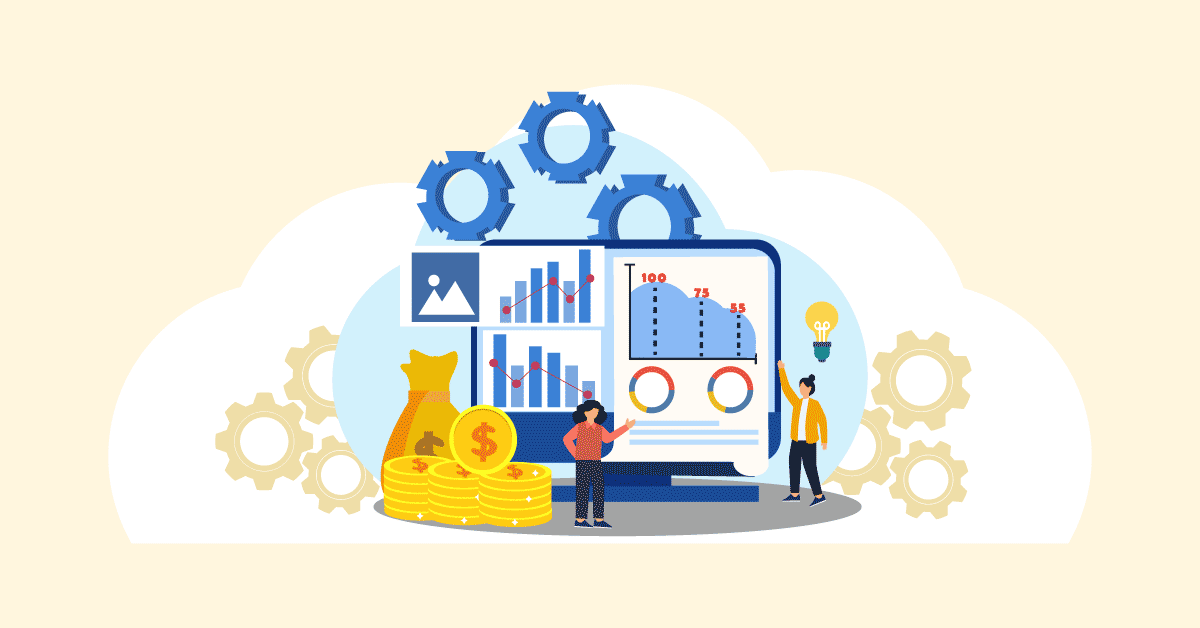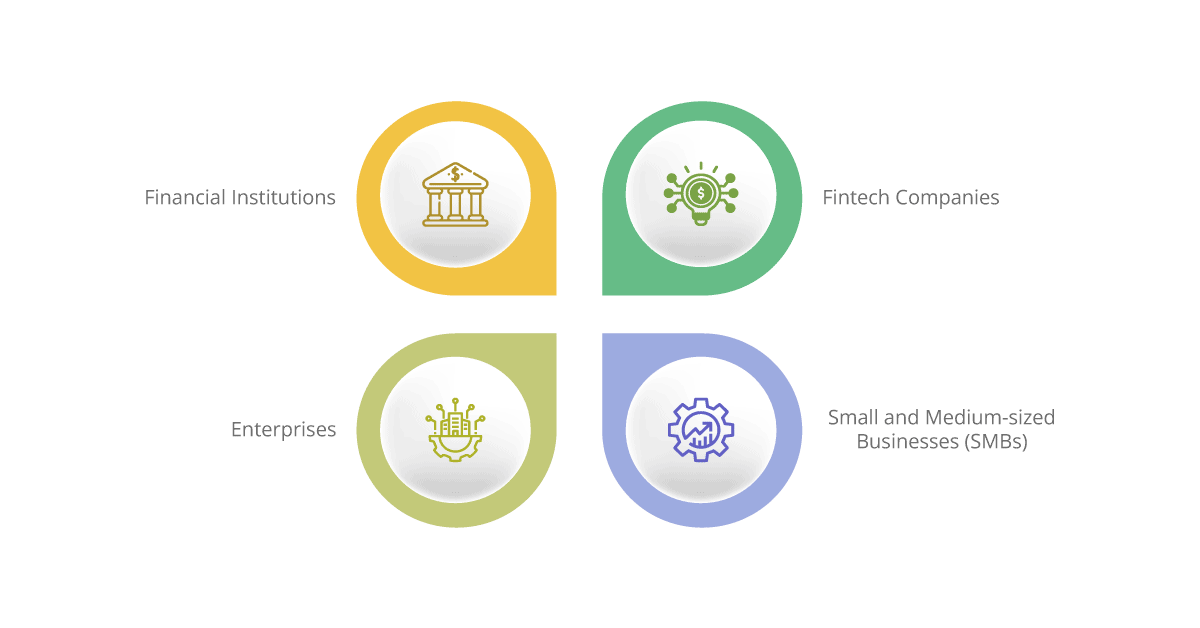Integration has become a buzzword in the finance industry. As the sector evolves rapidly, staying ahead requires seamless connectivity between various systems, applications, and data sources. Enter iPaaS – Integration Platform as a Service. iPaaS solutions are revolutionizing the way financial institutions manage their data, processes, and interactions. In this blog, we’ll delve into how iPaaS is transforming the finance industry integration landscape, the outcomes it brings, and who stands to benefit from its adoption.
Aonflow iPaaS – Free for First 3 Months!
Build and run up to 1,500 transactions monthly with no cost. No payment info needed!
Significance of iPaaS in Finance Integration
- Agility and Scalability: iPaaS enables financial institutions to adapt quickly to changing business requirements and scale their integration infrastructure as needed. Cloud-based deployment eliminates the need for costly hardware investments and allows organizations to deploy integrations rapidly.
- Cost Savings: By leveraging iPaaS, financial institutions can reduce the total cost of ownership associated with integration projects. With pay-as-you-go pricing models and reduced maintenance overheads, iPaaS offers a cost-effective alternative to traditional integration approaches.
- Data Consistency and Accuracy: iPaaS ensures data consistency and accuracy by automating data validation, transformation, and reconciliation processes. This minimizes the risk of errors and discrepancies, improving the reliability of financial data and reports.
- Compliance and Security: iPaaS platforms adhere to industry standards and regulatory requirements, ensuring compliance with data protection and privacy regulations. Built-in security features, such as encryption, access controls, and audit trails, safeguard sensitive financial information from unauthorized access and breaches.
Challenges in Finance Integration
In the fast-paced world of finance, where every second counts, seamless integration of systems and data is crucial for success. However, achieving smooth integration poses several challenges for financial institutions. In this article, we’ll explore some of the key challenges faced by the finance industry in integration efforts.
Complex Legacy Systems
One of the primary challenges in finance industry integration is dealing with complex legacy systems. Many financial institutions rely on outdated systems and technologies that were developed decades ago. These legacy systems often lack modern integration capabilities and are resistant to change. Integrating these systems with newer, cloud-based solutions can be a daunting task, requiring careful planning and execution to ensure compatibility and data consistency.
Data Security and Compliance
Data security and compliance are paramount concerns in the finance industry. Financial institutions handle vast amounts of sensitive information, including customer data, transaction records, and regulatory reports. Any integration effort must adhere to strict data protection laws and industry regulations, such as GDPR, PCI DSS, and Sarbanes-Oxley. Ensuring data security and compliance throughout the integration process requires robust encryption, access controls, and audit trails to safeguard sensitive information from unauthorized access and breaches.
Interoperability Challenges
Interoperability is another significant challenge in finance industry integration. Financial institutions often use a diverse array of applications, systems, and platforms from different vendors. These disparate systems may use incompatible data formats, protocols, and standards, making it difficult to achieve seamless communication and data exchange. Bridging the interoperability gap requires the development of custom integrations, data mappings, and middleware layers to facilitate communication between disparate systems.
Regulatory Complexity
The finance industry is subject to a myriad of regulatory requirements and reporting obligations. Integrating systems to ensure compliance with these regulations can be a complex and time-consuming process. Financial institutions must navigate a labyrinth of regulatory frameworks, including anti-money laundering (AML), know your customer (KYC), and Basel III, among others. Failure to comply with these regulations can result in hefty fines, reputational damage, and legal consequences, making regulatory compliance a top priority in integration efforts.
Cost and Resource Constraints
Cost and resource constraints pose additional challenges for finance industry integration. Implementing integration solutions requires significant investments in technology, infrastructure, and skilled personnel. Financial institutions must allocate resources effectively to balance integration priorities with other strategic initiatives. Limited budgets, competing priorities, and talent shortages can hinder integration efforts, delaying time-to-market and limiting the scalability of integration solutions.
Integration is a critical enabler of digital transformation and innovation in the finance industry. However, achieving seamless integration poses several challenges, including dealing with complex legacy systems, ensuring data security and compliance, addressing interoperability issues, navigating regulatory complexity, and managing cost and resource constraints. Overcoming these challenges requires a strategic approach, collaborative partnerships, and investment in modern integration technologies and best practices. By addressing these challenges head-on, financial institutions can unlock new opportunities, enhance operational efficiency, and deliver superior customer experiences in an increasingly interconnected world.
How iPaaS Addresses Challenges in Finance Integration
Integration Platform as a Service (iPaaS) offers a powerful solution to overcome the challenges faced by the finance industry in integration efforts. With its cloud-based approach, robust features, and flexibility, iPaaS addresses key challenges such as complex legacy systems, data security and compliance, interoperability issues, regulatory complexity, and cost and resource constraints. Let’s explore how iPaaS tackles these challenges:
1. Legacy Systems
iPaaS simplifies integration with complex legacy systems by providing pre-built connectors and adapters for a wide range of applications, databases, and protocols. These connectors abstract the complexities of integration, allowing financial institutions to connect legacy systems with modern cloud-based solutions seamlessly. iPaaS also offers data transformation capabilities to convert data formats and structures, ensuring compatibility between legacy and modern systems.
2. Data Security and Compliance
iPaaS platforms prioritize data security and compliance, offering built-in encryption, access controls, and audit trails to safeguard sensitive information. By hosting integration workflows in a secure cloud environment, iPaaS ensures that data remains protected throughout the integration process. Additionally, iPaaS platforms undergo rigorous security audits and certifications to demonstrate compliance with industry regulations and standards, alleviating concerns about data security and regulatory compliance.
3. Interoperability
iPaaS addresses interoperability challenges by providing a centralized platform for managing integration workflows and data mappings. With its visual interface and drag-and-drop tools, iPaaS enables users to create custom integrations and mappings between disparate systems with ease. iPaaS also supports a wide range of data formats and protocols, allowing financial institutions to communicate seamlessly with external partners and systems.
4. Regulatory
iPaaS platforms help financial institutions navigate regulatory complexity by providing built-in compliance features and regulatory reporting capabilities. iPaaS solutions offer templates and frameworks for common regulatory requirements, such as AML, KYC, and GDPR, streamlining compliance efforts. Additionally, iPaaS platforms integrate seamlessly with regulatory reporting systems and databases, automating data collection, validation, and submission processes to ensure timely and accurate regulatory reporting.
5. Cost and Resources
iPaaS offers a cost-effective alternative to traditional integration approaches, with pay-as-you-go pricing models and cloud-based deployment options. By eliminating the need for costly hardware investments and infrastructure maintenance, iPaaS reduces the total cost of ownership and enables financial institutions to allocate resources more efficiently. Additionally, iPaaS platforms provide self-service capabilities and intuitive interfaces, reducing the need for specialized IT skills and enabling business users to create and manage integrations independently.
iPaaS addresses the challenges faced by the finance industry in integration efforts by providing a comprehensive solution for connecting disparate systems, ensuring data security and compliance, addressing interoperability issues, navigating regulatory complexity, and managing cost and resource constraints. With its cloud-based approach, robust features, and ease of use, iPaaS empowers financial institutions to accelerate digital transformation, drive innovation, and deliver superior customer experiences in an increasingly interconnected world.
Aonflow is the leading integration platform.
You can kick-start by integrating your first-ever workflow in just a matter of minutes.
Who Benefits from Finance Integration with iPaaS?
iPaaS offers a wide range of benefits to stakeholders in the finance industry, enabling seamless connectivity, improved efficiency, enhanced security, and accelerated innovation. Let’s explore who stands to benefit from finance industry integration with iPaaS:
1. Financial Institutions:
Financial institutions, including banks, insurance companies, and investment firms, are among the primary beneficiaries of iPaaS integration. They benefit from:
- Streamlined Operations: iPaaS simplifies integration between core banking systems, customer relationship management (CRM) platforms, and third-party applications, enabling financial institutions to streamline their operations and improve efficiency.
- Enhanced Customer Experiences: iPaaS facilitates seamless data exchange between internal systems and customer-facing applications, enabling financial institutions to deliver personalized services, omnichannel interactions, and faster response times, enhancing overall customer experiences.
- Accelerated Innovation: iPaaS empowers financial institutions to innovate rapidly by providing a flexible and scalable integration framework. It enables them to integrate new technologies, launch innovative products, and enter new markets more quickly, driving growth and differentiation in a competitive landscape.
2. Fintech Companies:
Fintech startups and companies benefit from iPaaS integration by:
- Connecting with Financial Infrastructure: iPaaS enables fintech companies to integrate their innovative solutions with existing financial infrastructure, such as banking systems and payment gateways. This integration accelerates time-to-market for fintech products and services, enabling startups to gain a competitive edge and scale their businesses more rapidly.
- Accessing Data and Services: iPaaS provides fintech companies with access to a wealth of financial data and services through pre-built connectors and APIs. This enables them to leverage data-driven insights, automate processes, and deliver value-added services to their customers more effectively.
- Reducing Development Costs: By leveraging iPaaS for integration, fintech companies can reduce development costs and time-to-market for their solutions. iPaaS offers a range of pre-built connectors, workflows, and tools that simplify integration tasks, allowing fintech companies to focus on innovation and differentiation rather than infrastructure development.
3. Enterprises:
Enterprises across various industries benefit from iPaaS integration by:
- Optimizing Business Processes: iPaaS enables enterprises to integrate financial data with enterprise resource planning (ERP) systems, supply chain management (SCM) platforms, and e-commerce applications, streamlining business processes and improving operational efficiency.
- Enhancing Decision-Making: iPaaS provides enterprises with real-time access to integrated data from multiple sources, enabling them to make informed decisions and respond quickly to changing market conditions. This enhances agility and competitiveness in today’s fast-paced business environment.
- Enabling Digital Transformation: iPaaS accelerates digital transformation initiatives by providing a scalable and flexible integration platform that supports cloud-based applications, IoT devices, and emerging technologies. It empowers enterprises to embrace innovation, adapt to evolving customer needs, and drive growth in a digital-first world.
4. Small and Medium-sized Businesses (SMBs):
Small and medium-sized businesses benefit from iPaaS integration by:
- Streamlining Operations: iPaaS offers SMBs a cost-effective and scalable integration solution that streamlines operations, reduces manual effort, and improves productivity. It enables them to automate routine tasks, integrate data from disparate systems, and focus on strategic priorities without the need for extensive IT resources.
- Enhancing Agility: iPaaS enables SMBs to respond quickly to changing market conditions, customer demands, and competitive pressures. Its flexible and scalable architecture allows SMBs to scale their integration infrastructure as needed, supporting growth and expansion initiatives with minimal disruption.
- Driving Innovation: iPaaS empowers SMBs to innovate and differentiate themselves in the market by providing access to advanced integration capabilities and emerging technologies. It enables them to integrate new applications, adopt cloud-based solutions, and leverage data-driven insights to fuel innovation and drive business success.
iPaaS offers significant benefits to stakeholders in the finance industry, including financial institutions, fintech companies, enterprises, and small and medium-sized businesses (SMBs). By enabling seamless connectivity, improved efficiency, enhanced security, and accelerated innovation, iPaaS empowers organizations to unlock new opportunities, drive growth, and deliver superior value to their customers in today’s digital economy.
Conclusion
iPaaS is reshaping the finance industry integration landscape, empowering organizations to streamline operations, enhance data security, accelerate innovation, and improve customer experiences. From financial institutions and fintech companies to enterprises and SMBs, iPaaS offers a wide range of benefits to stakeholders across the ecosystem. As the finance industry continues to evolve, iPaaS will play an increasingly pivotal role in driving digital transformation and shaping the future of finance.
Aonflow iPaaS – Free for First 3 Months!
Build and run up to 1,500 transactions monthly with no cost. No payment info needed!


